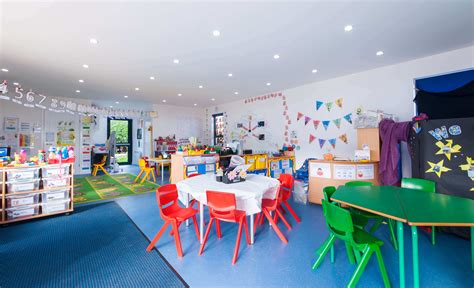Create a Thriving Learning Environment: School Startup 101
Starting a school is a monumental undertaking, requiring passion, dedication, and a comprehensive understanding of educational best practices. This isn't just about bricks and mortar; it's about cultivating a thriving learning environment where students flourish. This guide provides a foundational roadmap for aspiring school founders, focusing on building a vibrant and successful institution.
Defining Your Niche and Vision
Before diving into logistics, you need a clear vision. What kind of school do you want to create? Will it be a traditional academy, a Montessori school, a STEM-focused institution, or something entirely unique? Defining your niche is crucial for attracting the right students and staff.
Consider these factors:
- Target demographic: What age group will you serve? Will you focus on specific learning styles or abilities?
- Curriculum: What will your core curriculum be? Will you incorporate innovative teaching methods or technologies?
- Mission statement: What are your core values and educational philosophy? This will guide all your decisions.
- Unique selling proposition (USP): What makes your school stand out from the competition? What unique offering will attract parents and students?
Building a Strong Foundation: Legal and Financial Aspects
Establishing a school involves navigating complex legal and financial landscapes. This includes securing the necessary licenses and permits, developing a robust business plan, and securing funding.
Legal Requirements:
- State licensing: Research the specific requirements for starting a school in your state or region. This typically involves submitting detailed applications, meeting specific educational standards, and undergoing inspections.
- Insurance: Obtain appropriate liability insurance to protect your school from potential risks.
- Compliance: Familiarize yourself with all relevant laws and regulations related to child safety, education, and employment.
Financial Planning:
- Business plan: A comprehensive business plan is essential for securing funding and demonstrating the viability of your school. This should include detailed financial projections, marketing strategies, and operational plans.
- Funding sources: Explore various funding options, such as private investors, grants, loans, and tuition fees. Develop a realistic budget that covers all operational expenses.
- Financial management: Implement sound financial management practices to ensure the long-term sustainability of your school.
Crafting a Thriving Learning Environment: Pedagogy and Infrastructure
The heart of any successful school is its learning environment. This encompasses pedagogical approaches, physical infrastructure, and the overall school culture.
Pedagogical Approaches:
- Teaching methodologies: Choose teaching methodologies that align with your school's mission and the needs of your students. Consider incorporating project-based learning, inquiry-based learning, or other innovative approaches.
- Curriculum development: Create a curriculum that is engaging, challenging, and aligned with educational standards.
- Assessment methods: Implement assessment methods that accurately measure student learning and provide valuable feedback.
Infrastructure and Resources:
- Classroom design: Create classrooms that are stimulating, functional, and conducive to learning. Consider incorporating technology and flexible learning spaces.
- Technology integration: Integrate technology effectively to enhance learning and provide access to valuable resources.
- Library and resources: Establish a well-stocked library and provide access to other learning resources.
Building a Strong Team: Staff Recruitment and Training
Your staff is your greatest asset. Recruiting and retaining talented educators is essential for creating a thriving learning environment.
Teacher Recruitment:
- Candidate screening: Develop a thorough screening process to ensure you hire qualified and passionate educators.
- Teacher training: Provide ongoing professional development opportunities to keep your staff up-to-date with the latest teaching methods and best practices.
- Mentorship programs: Implement a mentorship program to support new teachers and help them thrive in their roles.
Marketing and Community Engagement
Attracting students and building a strong community is crucial for the long-term success of your school.
Marketing Strategies:
- Website and social media: Create a professional website and use social media to connect with potential families.
- Community outreach: Engage with the local community through events and partnerships.
- Open houses and tours: Host open houses and school tours to showcase your school's unique offerings.
What are the biggest challenges in starting a school?
Starting a school presents numerous challenges, including securing funding, navigating complex regulations, building a strong team, and attracting students. Overcoming these hurdles requires meticulous planning, strong leadership, and a resilient spirit.
How do I get funding for a new school?
Funding can be sourced through various avenues: private investors, grants from philanthropic organizations, government loans, and of course, tuition fees. A comprehensive business plan is crucial for securing funding from any of these sources.
What licenses and permits do I need to open a school?
The specific licenses and permits required vary by location. Contact your local education authority or relevant government agency to determine the precise requirements in your area. These often include state licensing, business permits, and potentially health and safety certifications.
How do I create a positive school culture?
A positive school culture is fostered by clear communication, mutual respect, a shared vision, and opportunities for collaboration between students, teachers, and parents. Open communication channels, regular feedback mechanisms, and consistent reinforcement of positive values are essential.
By addressing these key aspects, aspiring school founders can significantly increase their chances of creating a thriving learning environment that benefits both students and the wider community. Remember that establishing a successful school is a marathon, not a sprint. Consistent effort, adaptability, and a deep commitment to educational excellence are paramount to success.

